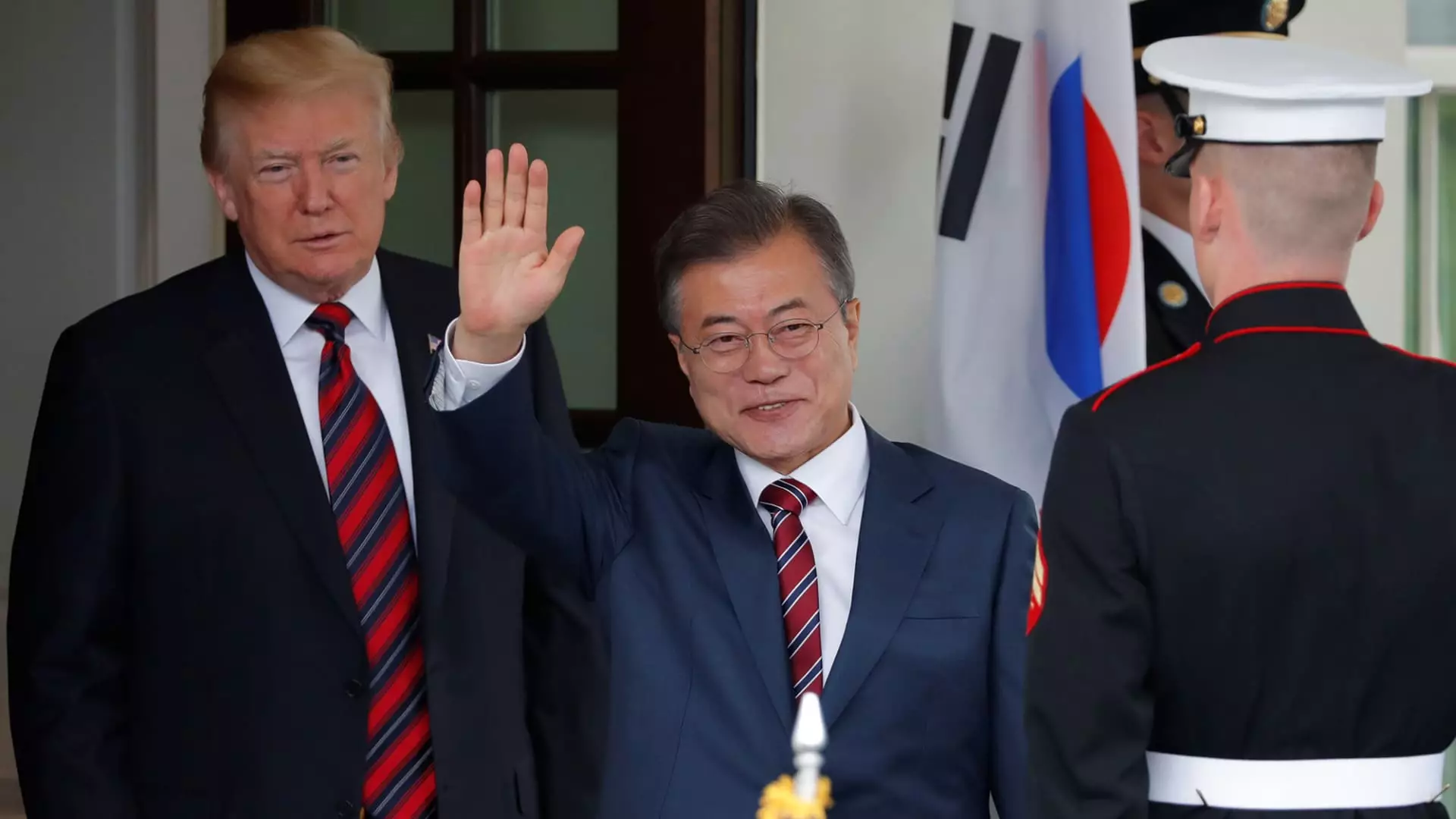The automotive industry is at a crossroads as President Donald Trump’s administration threatens to further escalate tariffs on imports, specifically targeting U.S. trading partners such as South Korea and Japan. This situation brings to the forefront crucial economic implications, particularly for the auto sector, which is profoundly intertwined with international trade dynamics. Given that South Korea and Japan accounted for nearly 17% of vehicles sold in the United States in the previous year, the stakes are high, and both countries’ statuses as significant auto exporters are being tested.
The unpredictability surrounding tariff policies poses substantial risks for automakers. South Korea emerged as the second-largest exporter of vehicles to the U.S. last year, surpassing Canada and Japan, with a notable volume of exports that culminated in more than 1.37 million vehicle sales in 2024. Japanese automakers such as Toyota, Nissan, and Honda contributed to sales that translated into approximately 1.31 million units sold in the same period. However, the looming threat of additional tariffs could upset the delicate balance these manufacturers currently enjoy, especially considering that vehicles imported from Japan are already subjected to a 2.5% tariff.
Despite Trump’s aggressive tariff stance, the current trade agreement with South Korea has resulted in a 0% tariff on various automobile models. While this may appear to safeguard the U.S. market from price hikes due to tariffs, ongoing negotiations and trade disputes could compromise this status quo, raising concerns about potential price increases for consumers and declining vehicle demand in an already competitive market.
Industry giants like General Motors (GM) and South Korea-based Hyundai must navigate through these turbulent waters with caution. GM’s increasing dependence on South Korean production has seen a rise in the importation of models like the Chevrolet Trax and Buick Encore GX. With the automaker poised as the largest foreign direct investor in Korea, any backlash from tariffs could endanger their operations and affect the pricing structures of their vehicles in the U.S. market. Similarly, Hyundai’s significant market share in the U.S. leaves it exposed to retaliatory tariffs, which could disrupt their pricing strategies substantially.
Analysts like Jeff Schuster highlight that while companies like Hyundai and GM hold considerable exposure to these potential tariffs, the impact may be limited to a few major players. Nevertheless, the interdependence between these corporations and the current geopolitical climate serves as a stark reminder of the fragility of international trade agreements.
As tariff policies loom, experts predict that the automotive industry can adapt to changing circumstances, albeit slowly and with significant adjustments. Terence Lau, a former trade expert, emphasizes that while lower tariffs may be manageable, hitting double digits could substantially alter the cost dynamics for manufacturers. This situation leads to raised vehicle prices, ultimately trickling down to consumers.
Ford’s CEO, Jim Farley, advocates for a comprehensive approach to tariffs, suggesting that a targeted strategy on a few countries may give unfair advantages to select automotive competitors. Farley’s comments reflect the sentiment in the industry that a holistic examination of tariff impacts is essential for maintaining competitiveness in an increasingly globalized market.
Amidst this landscape of uncertainty, the Trump administration’s impending decisions on tariffs are under scrutiny. Key sectors such as pharmaceuticals and automotive have been earmarked for potential exemptions, underscoring the complexities involved in tariff implementation. It is not yet clear whether South Korea and Japan will be directly affected by the proposed tariffs, but the mere threat has already begun to ripple through the auto industry.
As stakeholders await the outcome of further discussions, the automotive market’s structure may change irrevocably. Given the inherent demand for economical and reliable transport solutions, the industry must find a balance that supports consumer needs while navigating economic pressures stemming from tariff disputes. The path forward is fraught with challenges, and the auto industry’s ability to adapt will be critical in maintaining its competitive edge in an evolving global trade environment.
The potential for increased tariffs on automotive imports from South Korea and Japan presents both risks and opportunities. While established players such as GM and Hyundai are likely to face challenges, the overarching dynamics of the market, integrated with the essential need for vehicle mobility, signal that the industry may find ways to innovate and adapt even in the face of potential disruptions. The outcome will ultimately shape the future of U.S. automotive trade and manufacturing for years to come.



Leave a Reply